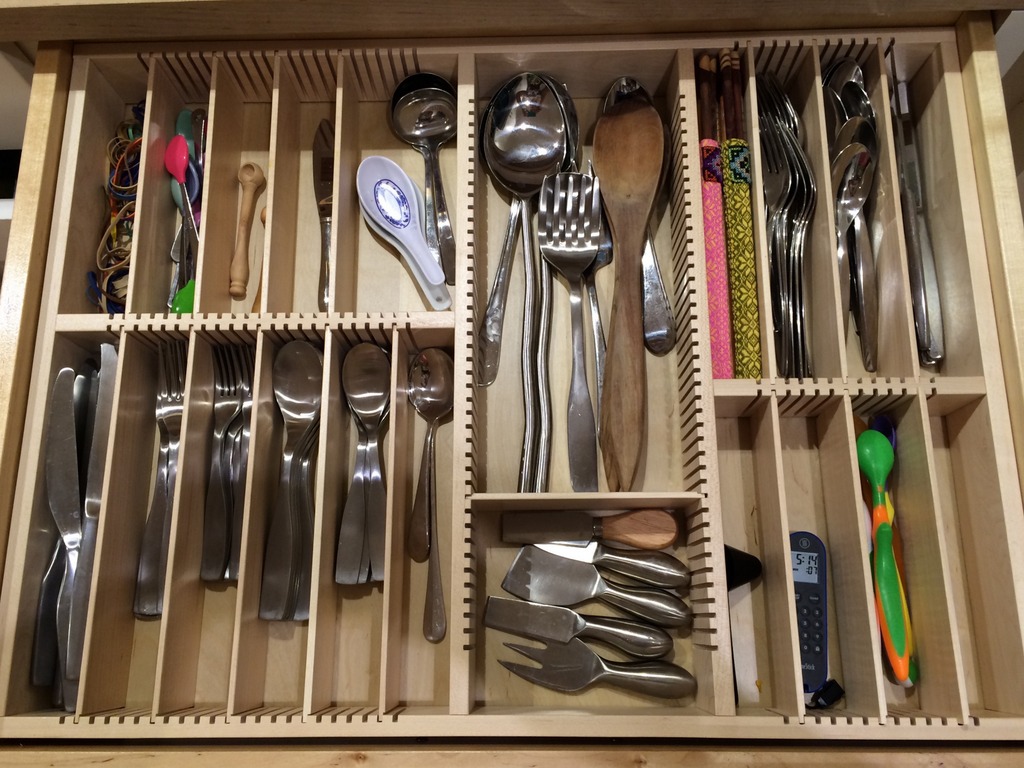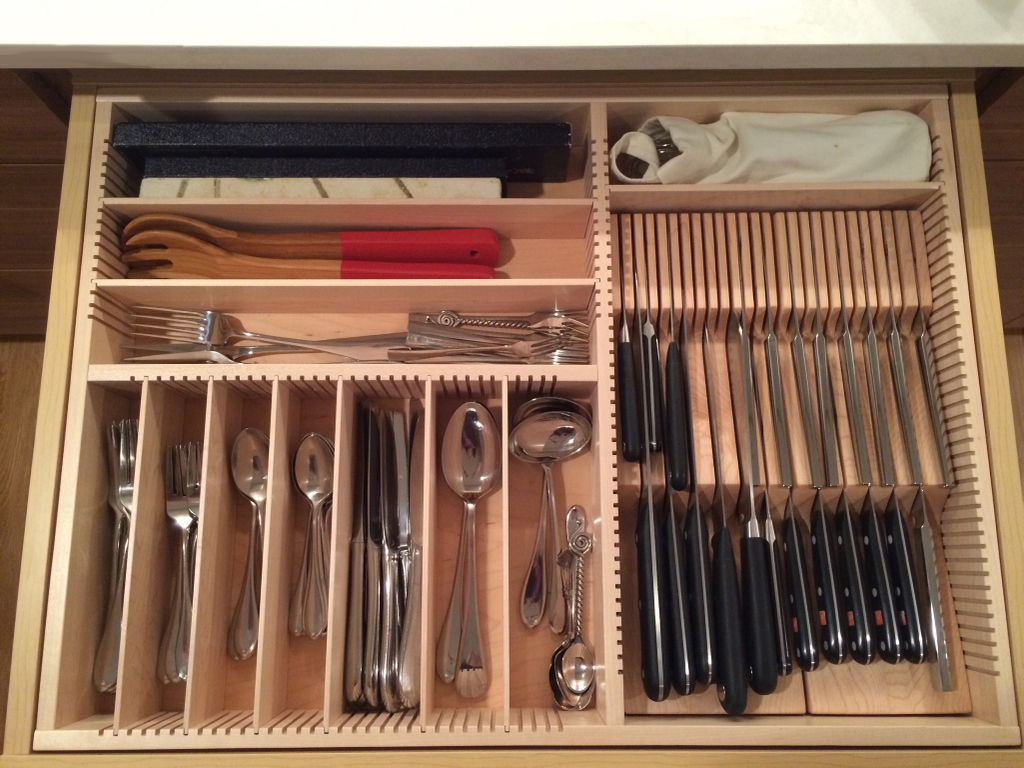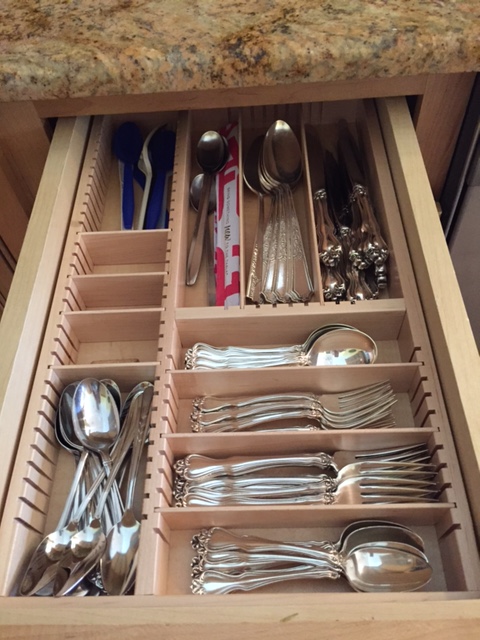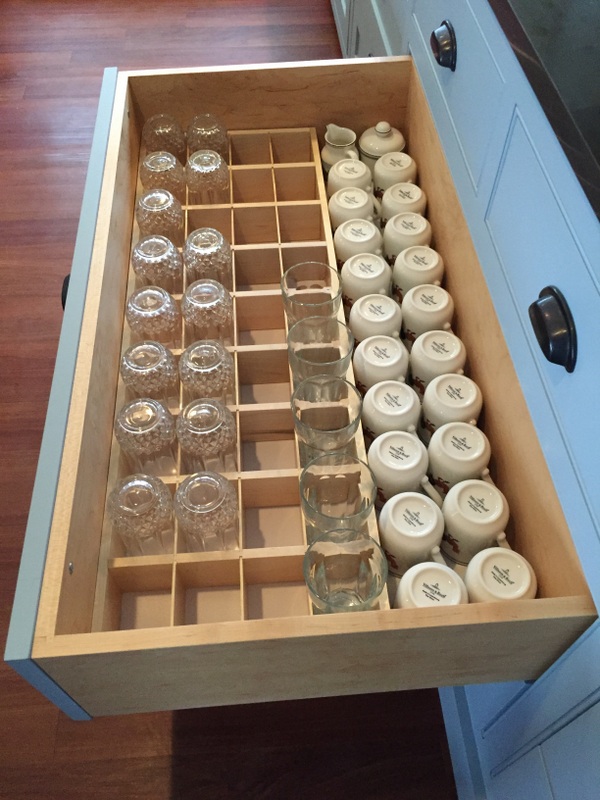People often assume that the height of their drawer insert should be level with the height of their drawer box, but this is not necessarily the case. Another common assumption is that there are “standard” drawer sizes. If you’re reading this blog, chances are you live in a part of the world that is wealthy enough to have no such thing. Beyond kitchen counter height, there are not many “standards” when it comes to cabinetry and therefore drawers. Drawers come in a myriad of sizes, including heights.

The height of your insert should be determined by how you plan to use the drawer — not by the height of the drawer.
Consider a 4.5″-tall drawer where you plan to store silverware. If the drawer insert were 4.5″ tall, and you had a 2.5″-wide compartment for forks, imagine reaching your hand into such a compartment. If you can’t imagine the tight squeeze that would be (especially if you have large hands and if the compartment contained only a few forks), try to simulate such a situation before designing and purchasing. Such an insert might look nice in the drawer, but retrieving items from it could be quite awkward.
There’s a reason why most off-the-shelf drawer organizers are 2″ or less in height.
Certainly, though, there is a place for tall-ish inserts — a narrow , 10″-wide drawer that needs to hold 12 place settings of flatware, a baking drawer for large bulky items that could spill over a short insert…
Bottom line: when deciding the height of an insert, consider functionality above all else. Consider how your drawer extends and if that should factor into your insert height decision. If you determine that you need a 2.5″ or taller insert, you might want to consider scooped dividers.














